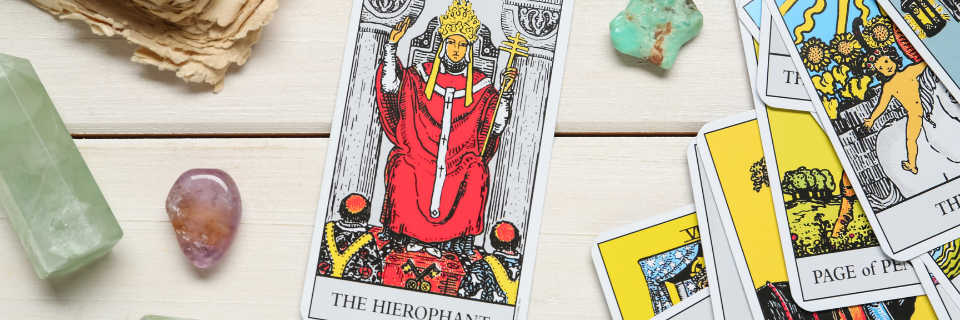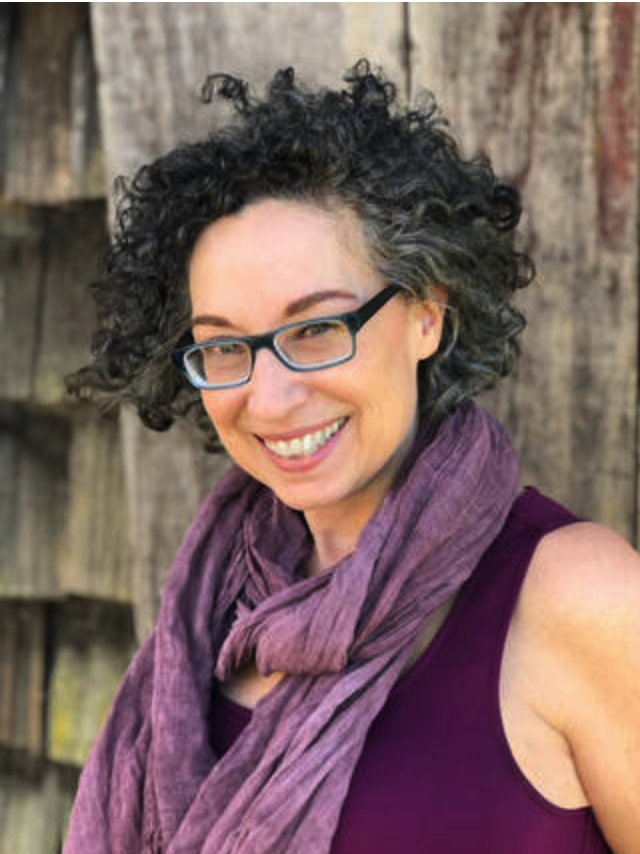Tarot as Sacred Text

One of the reasons that tarot fascinates so many people for so long (sometimes for the whole of their lives) is that there are so many ways to understand the cards. Divination is one way, perhaps the most common, and is certainly valuable. I also like to see the cards, individually and in groups, as a sacred text that teaches me about the mysteries of the world and of myself.
Many spiritual paths have sacred texts. Christians have their Bible; Muslims, the Quran. Many pagans say that the Earth is their sacred text. I do not think that a sacred text must be ordained or approved by any organization. You can have your own sacred text. Witches have their Books of Shadows, where they write all the important things that they learn as well as their spells. It is their personal sacred text. Many tarot readers consider their decks as an unbound sacred book that can be shuffled to provide wisdom about any situation. Vanessa Zoltan and Casper ter Kuile created the Harry Potter and the Sacred Text podcast in order to read a series that they love as a sacred text.
According to Zoltan and ter Kuile, one defining characteristic of a sacred text is that it is generative. What they mean is the work is not static but continually provides new and insightful information. This is one reason that tarot readers love their cards. Tarot readers can use a deck for years and yet still see something new in the cards. Not only that but consider this: we do not have a single complete existing original tarot deck and yet throughout the centuries we continue to create more decks that show the wisdom of the cards in different ways. Even decks with similar themes are all still unique from each other. There are lots of cat-themed tarots and they are all different. Likewise, there are multiple versions of fairy, magic, witch, and animal-themed decks. There is room in the world for all of them because tarot is generative, and each incarnation shows us something different.
For example, the other day tarot showed me an interesting way to look at a series of cards: The Magician, The High Priestess, The Empress, The Emperor, and The Hierophant.
1. The Magician is the expression of our will via our ego. By ego I mean our sense that we are unique and separate individual beings.
2. The High Priestess is the expression of our intuition via our soul. By soul I mean our sense that we are connected to all things.
The Magician and High Priestess together describe the state of being human, that strange dichotomy that drives us: the desire to express our individuality in the world and the yearning to reunite with all that is.
3. The Empress is our ability to create via our actions.
4. The Emperor is the direction of creativity via our intellect.
Together these four cards are like the four pillars of our identity: what drives us, what we do, and how we do it.
5. The Hierophant is the movement of our identities toward our ideals via change.
Many people miss the value and inherent energy of the Hierophant due to wounds caused by the imperfect expression of the Hierophant energy by others (both individuals and organizations) in the past. Because it is easy to dislike “organized religion,” which admittedly fails so many of us, we can easily dismiss the true value of the Hierophant. This is just as dangerous as disregarding the value and positive aspects of the Empress because our mother wasn’t a great mom.
When we allow our wounds to denigrate the true wisdom and gift of an archetype, we put it in shadow. Things in our shadows (individually and collectively) always find a way out and when they do it isn’t pretty because anything left in shadow for too long will grow twisted and punchy.
While we easily understand the numerological connections of the Magician, High Priestess, Empress, and Emperor, the association of the Hierophant with the number 5 baffles many people. Fives, after all, are about change and, for better or worse, most of us see the Hierophant as rigidity rather than innovation. That is too bad because it causes us to miss out on the gift of the Hierophant, and it is such an important gift for those of us on the path to becoming our best selves and living our true soul’s purpose in the world.
The Hierophant is about change.
- He invites us to identify our deepest ideals and beliefs.
- He asks us to examine our current actions and behaviors.
- He compels us to compare the two and determine where they match up and where they don’t.
- He pushes us to continually close the gap between our words and our actions.
Taken together, these five cards (Magician, High Priestess, Empress, Emperor, and Hierophant) illustrate how we, as spiritual beings having a human experience, can move forward toward continued spiritual, mental, and emotional growth.
May your mind and heart always be open to the wonders in the cards.
May the cards reveal their expansive wisdom to you.
May you use these gifts to make yourself and the world better.
Posted with permission from tarotshaman.com
Behind the Veil: A Master Q&A with Barbara Moore
(Facilitated by Sasha Graham)
Sunday, October 16, 2022
10 am – 11 am PT / 1 pm – 2 pm ET

Curious about the evolution of tarot cards and their multi-faceted meanings? Or how the principles of design and psychology influence a reading? Have you ever wondered why no two readings are ever the same—even when the same cards emerge? Want to know how a tarot reader becomes a bestselling author or an award-winning deck creator? Register now for this exclusive, live master Q&A session that gives VIPs the opportunity to have their personal tarot questions answered by revered tarot expert, author, and teacher Barbara Moore. (The recording of this presentation will be included with all ticket levels.)
